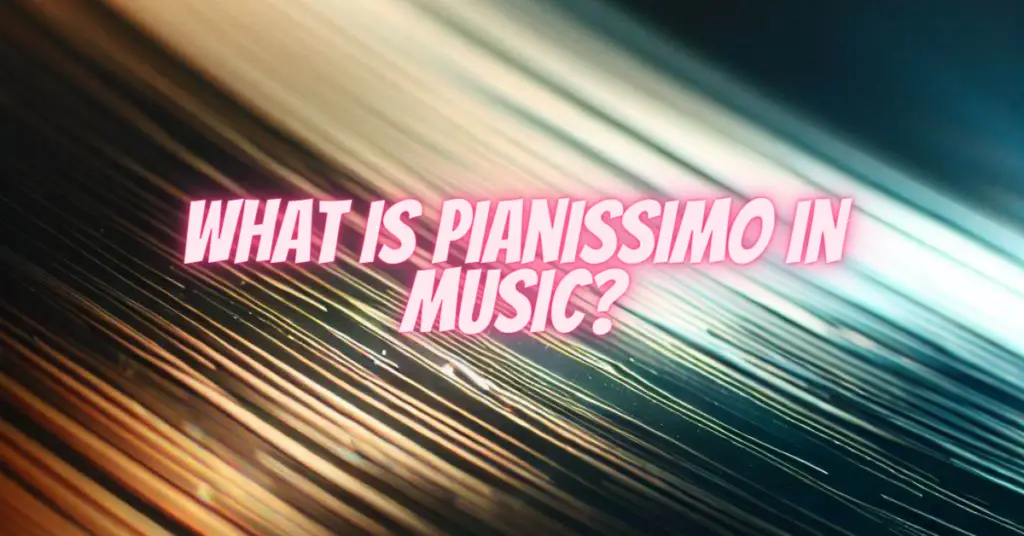In the language of music, dynamics play a crucial role in shaping the emotional landscape of a piece. Among these dynamic markings, “pianissimo,” often abbreviated as “pp,” holds a special place. Pianissimo refers to an exceptionally soft and delicate volume level, representing a moment of musical intimacy and subtlety. In this article, we will explore the significance of pianissimo in music, its notation, and how it adds depth and nuance to musical compositions.
1. Defining Pianissimo:
Pianissimo, originating from the Italian language, translates to “very soft.” In the realm of music, it denotes a volume level that is extremely quiet and gentle. Pianissimo passages are characterized by their hushed tones, creating an aura of intimacy and vulnerability. Composers and musicians use pianissimo to evoke emotions that require the listener’s close attention and sensitivity.
2. Notation and Appearance:
Pianissimo is typically denoted by the abbreviation “pp” written above the musical staff. When a passage or section is marked as pianissimo, performers understand that the music should be played at the softest possible volume. It contrasts with louder dynamic markings such as piano (p), mezzo-piano (mp), and forte (f), emphasizing the need for a significantly reduced sound level.
3. Expressive Potential:
Pianissimo passages offer a wide range of expressive possibilities for musicians. When played softly, certain instruments reveal hidden nuances in their timbre, creating a sense of mystery and allure. Pianissimo can convey emotions like tenderness, introspection, or fragility, allowing composers to craft moments of profound emotional impact within a piece of music.
4. Subtle Artistry in Performance:
Performing pianissimo passages requires exceptional control and sensitivity from musicians. Skillful manipulation of touch, finger pressure, and breath (for wind instruments and vocalists) is crucial to producing a soft, controlled sound without sacrificing tone quality. Musicians must also pay careful attention to phrasing and dynamics, ensuring that pianissimo passages seamlessly blend with the surrounding music.
5. Pianissimo in Various Genres:
Pianissimo is not limited to any specific genre of music; it is a dynamic marking utilized in classical, jazz, contemporary, and various other musical styles. In jazz, for instance, a pianissimo section can create an intimate atmosphere during a solo performance, highlighting the performer’s expressive improvisation. Similarly, in classical compositions, pianissimo passages often signify moments of emotional depth and introspection.
6. The Impact of Silence:
Pianissimo is not only about producing soft sounds but also about embracing moments of silence and stillness in music. The strategic use of pauses and rests within pianissimo passages amplifies their impact, allowing listeners to absorb the subtle nuances of the performance. Silence, intertwined with softness, can be as powerful as any loud crescendo, captivating audiences with its restraint and grace.
Conclusion
Pianissimo, with its delicate and understated nature, adds a layer of depth and emotion to music. Through its softness, musicians can create intimate and introspective moments, inviting listeners to immerse themselves in the subtle artistry of sound. Pianissimo passages, marked by their hushed tones and careful execution, remind us that in the world of music, sometimes the most profound expressions are found in the gentlest whispers.

